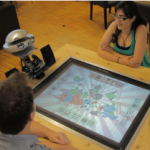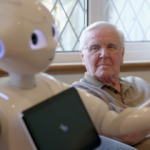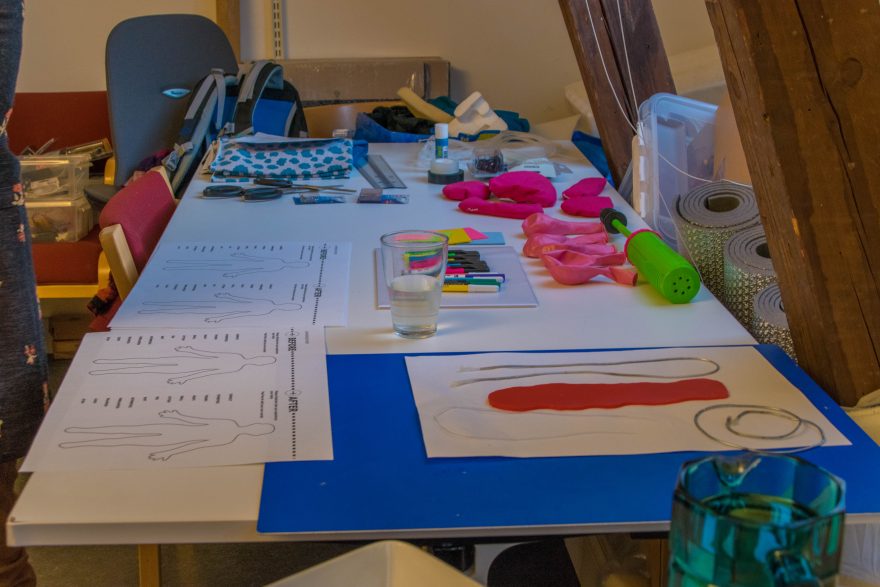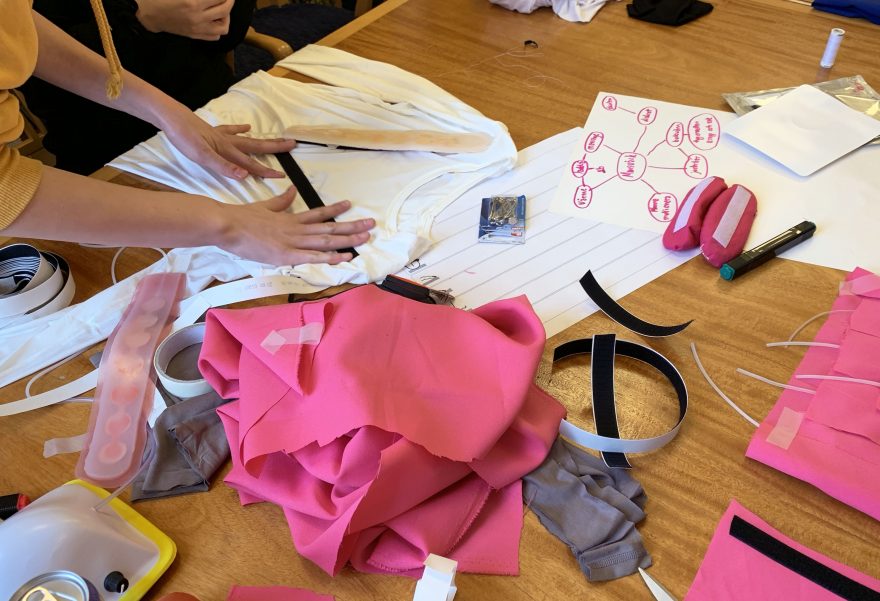About the project
Objective
We have two key objectives:
- Understand the extent of diversity at multiple spatial scales in biological systems
- Build an interdisciplinary community in Digital Futures to develop computational models that account for the experimental observed heterogeneities
To this end besides extensive literature surveys we will organize thematic workshops to find synergies among digital future researchers. Besides, we will bring together international experts in the area for a conference at Digital Futures.
Background
Biological systems are shaped by their evolutionary history and adaptation animals acquire throughout their life. This implies that even if two beings exhibit similar behavior the underlying physiological mechanism could be different and vice versa. ‘Degeneracy’ and diversity can be seen at every scale in biological systems: from gene expressions to behavior and can be quantitatively observed in heavy-tailed distribution of physiological parameters. Parameters that describe a biological system usually do not follow the classical Gaussian (or exponential family) distribution.
This biological reality is in stark contrast to how we build computational models of biological systems: Either take a data-driven or normative approach. Data-driven models rely on extensive data but typically we end up with an average model. Normative modeling on the other hand seeks to model biological systems assuming (based on data or some physical/chemical principles) that the system is ‘optimized’ in some sense. Both approaches ignore the fact that cohorts of biological systems do not follow normal distribution and each animal is optimized in their own way.
In this project we want to better understand the structure of the non-normal nature of biological data and how it can be better captured in our computational models.
Cross-disciplinary collaboration
We will focus on three specific spatial scales i.e. molecular level (i.e. genome, transcriptome and proteome), tissue/organ level (i.e. neural networks, cellular physiology, multiscale tissue mechanics, computational human models) and behavior level (i.e. decision-making, motor control). While the data at each level is different we expect there will be some common principles that relate diversity at different levels.
Contacts: Arvind Kumar, Xaiogai Li and Lanie Gutierrez-Farewik
About the project
Objective
This project will address interactions with novel conversational systems, such as social robots and digital assistants. These technologies can assist people in societal situations such as health care, elderly care, education, public spaces and homes.



A telepresence system for human-robot interaction will be developed, allowing participants to situate themselves in natural conversations while physically in a functional magnetic resonance imaging scanner. Each participant will interact directly with a human-like robot and other human actors while lying in the scanner.
This neuroimaging experiment will allow us to understand cognitive processes underlying engagement. It will also enable an unheard-of in-depth evaluation and perception of conversational engagement as a user state.
Background
In everyday conversations, a speaker and a listener are involved in a common project that relies on close coordination, requiring each participant’s continuous attention and related engagement. At the same time, additional bystanders might show less engagement in the conversation.
Previous research in human-human and human-robot interaction has identified four types of events establishing engagement involving gesture and speech: (1) joint directed gaze at objects, (2) mutual facial gaze, (3) back-and-forth conversation, (4) short feedback such as nods while the speaker is talking. We will study the underlying neural signatures of conversational engagement.
Crossdisciplinary collaboration
The researchers in the team represent the Department of Intelligent Systems at KTH EECS, the Psychology Department and the Linguistics Department at Stockholm University.
Watch the recorded presentation at the Digitalize in Stockholm 2023 event:
About the project
Objective
This project will produce a landmark, large-scale qualitative study of the first algorithmic contraceptive on the market. Natural Cycles offers an algorithmic contraceptive option to more than 700,000 users worldwide. This provides an excellent testbed for studying how trust is developed, experienced, and maintained between primary and secondary users as well as an algorithmic health service. Crucial insights will be gained into e.g. the mechanisms by which users choose to trust and continue trusting an algorithmic digital health technology, with a focus on psychological, contextual and interpersonal factors.

Background
Algorithmic systems and Artificial Intelligence (AI) are poised to disrupt how we deliver and experience healthcare, providing new solutions to personal and public health issues. Trust has been identified as one key foundation for the success of digital health technologies. Mechanisms that promote trust are critical areas for research and innovation. Health interventions are often designed for use – and behaviour change – at an individual level. However, health choices, health behaviours, and critically trust in healthcare service providers are interpersonal and socially constructed. This calls for research on trust in health technologies engaging with the wider social context of ‘use’ when examining how trust is developed and maintained.

Crossdisciplinary collaboration
The researchers in the team represent the School of Electrical Engineering & Computer Science, KTH, and the Department of Computer and Systems Sciences (DSV), Stockholm University.
Watch the demo video of IntimateHealth here:
About the project
Objective
The project aims to develop the digital twins of the personalized human neuromusculoskeletal system by integrating the latest developments in personalized neuromusculoskeletal modelling, innovative biomass-based printable electronics, and simultaneous 3D ultrasound imaging. The breakthrough feature of integrating ultrasound transparent electrodes (Ultrasonic electrodes) into the digital twins’ framework opens a new window in real-time monitoring and supervision in personalized rehabilitation.
Background
It is estimated that 15% of the world population live with one or more disabling conditions, and more than 26% of those over 60 years of age. Impaired motor function is one of the major disabilities in which persons may lose their ability to perform daily activities and experience reductions in health-related quality of life. The management of complex disability largely relies on rehabilitation. In clinical practice, the supervision and the evaluation of a rehabilitation motion pattern remain a medical and engineering challenge due to the lack of biofeedback information about the effect of the rehabilitation motion on individual human biological tissues and structures.
Crossdisciplinary collaboration
The researchers in the team represent the Department of Engineering Mechanics at KTH SCI and the Department of Fibre and Polymer Technology at KTH CBH.
Watch the recorded presentation at the Digitalize in Stockholm 2023 event:
About the project
Objective
This project aims to characterise the brain’s mechanical properties through Magnetic resonance elastography (MRE) in adolescents and older children and correlate them with risk factors for developing anxiety disorders. Our long-term goal is to characterize the brain’s mechanical properties at different ages to improve the diagnosis and treatment of anxiety disorders in the young population. Our long-term aim is to extend this project to characterize the mechanical properties of the brain at different stages of brain development, which can be used to improve the diagnoses of various neuropsychological diseases, especially at early stages where treatments are more likely to have an effect and to track the response of patients to treatments better.
Background
Very little is currently known about the evolution of the mechanical tissue properties of the brain in the first two decades of life. Such information can be valuable in improving the diagnosis of prevalent neuropsychiatric disorders in the young population, particularly anxiety disorders. MRE in the brain is a new technique in which mechanical properties of the brain tissue are estimated non-invasively. MRE has barely been used in children. MRE for the brain is only available in a few sites worldwide. This Spring, KTH will become the only site in Sweden with this technology. This opens a tremendous strategic opportunity for KTH to take the lead in its use for brain diseases.
Crossdisciplinary collaboration
The researchers in the team represent the School of Engineering Sciences in Chemistry, Biotechnology and Health (CBH), KTH and the Psychology Department at Stockholm University.
Watch the recorded presentation at the Digitalize in Stockholm 2023 event:
About the project
Objective
Extended Reality (XR) technologies offer remote colocated experiences, realistic interactions, and the potential for a climate-neutral society. However, understanding their impact on cultural and social behaviours, as well as addressing ethics, privacy, and security concerns, is crucial for both the public and industry. One of the major limitations of the current extended reality (XR) technology is its focus on single-user experience, mainly when other users are physically co-present. Previous criticism has also highlighted that VR experiences were primarily designed for the white, Western, male sensorial body, leading to biased and non-inclusive strategies.
This default design has caused harm to female bodies and abusive behaviour and significantly neglected gender differences XR experiences. Moreover, XR technologies present several ethical issues, e.g., technology’s privacy and security. Hence, the considerations of XR privacy and the ethical implications surrounding (unintentional) participation emerge as subjects of public concern within this project.
The project objectives are:
- To understand the relationship between the use of extended reality technologies and the requirements of society in terms of ethics, security, trustworthiness and inclusivity from a society-centric perspective.
- To explore users’ multisensory experiences using haptic feedback with a set of indoor and outdoor extended reality contexts as active and passive users.
- To derive a set of ethical guidelines based on controlled empirical evaluations with the aforementioned set of experiences and users’ reflections on them.
Crossdisciplinary collaboration
The researchers in the team represent the KTH School of Electrical Engineering and Computer Science and RISE Research Institutes of Sweden, Digital Systems Division.
About the project
Objective
This project will complement our landmark, large-scale qualitative study of the first algorithmic contraceptive on the market – Natural Cycles – by examining the experiences of individuals who have previously used the service as a form of contraception but no longer subscribe to it. Our layered approach to trust also encompasses psychological, contextual and interpersonal factors that question and enliven current trust models in AI and algorithmic systems. Through the project, we expect to learn about what happens when trust in digital intimate health technologies breaks down and to co-design user experience mechanisms that respond to what an intimate digital health technology could do to re-establish trust when it has been challenged or lost.
Background
Algorithmic systems and Artificial Intelligence (AI) are poised to disrupt how we deliver and experience healthcare, providing new solutions to personal and public health issues. Trust has been identified as one key foundation for the success of digital health technologies. Mechanisms that promote trust are critical areas for research and innovation. Health interventions are often designed for use – and behaviour change – at an individual level. However, health choices, health behaviours, and critical trust in healthcare service providers are interpersonal and socially constructed. This calls for research on how trust is developed, experienced, and maintained between users and an algorithmic health service – but also what happens when something goes wrong with the technology or between the people using it as a part of an intimate relationship.
Crossdisciplinary collaboration
The researchers in the team represent the Department of Computer and Systems Sciences (DSV), Stockholm University, and the School of Electrical Engineering and Computer Science, KTH.
Watch the recorded presentation at the Digitalize in Stockholm 2023 event:
